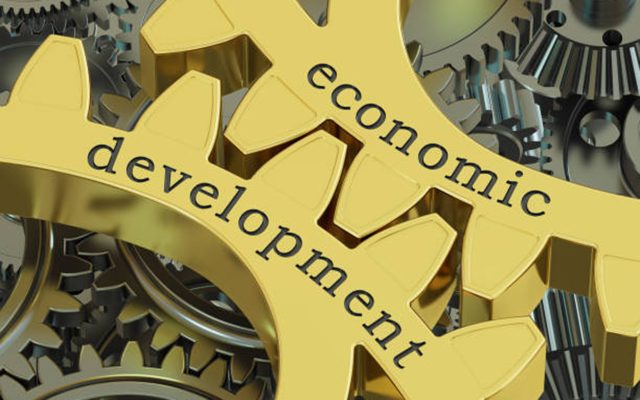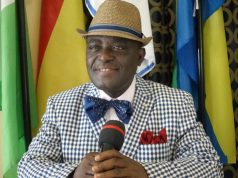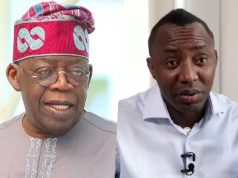In recent times, several significant shocks that have disrupted the global economy and exacerbated reversals have affected low-income countries and fragile and conflict-affected states more.
The poorest countries are not catching up but falling behind. External shocks delay the possibilities for income convergence with these middle-income and advanced economies. They face poverty and food insecurity, and as well, debt vulnerabilities.
Reversal of Nigeria’s decades of social anomie and economic stagnation represents such the rebuilding of a wall because it is beyond brick and mortar. It is equally a regenerative process of the human agent; the restoration of values long forgotten or crushed under the weight of contrary forces.
It is a renewal of the human agency taken away by the unrelenting forces of underdevelopment. The destruction of the wall of knowledge, accumulated industrial skills and expertise, represents the broken wall.
Many, if not all, of us carried out of this citadel of learning, a certain feeling of inherent power that propelled us forward in search of great goals to conquer. We were convinced we could shape the Nigeria of our dream to greatness. So alas 55 years after, here we are!
To properly understand a reversal of national fortune, consider the average Asian who in 1950 had almost half as much income as the average African, he/she was twice as rich by 2016. The income of the average Asian had risen to 80 per cent of that of the average global citizen.
Meanwhile, Africa wallowed in poverty with its average citizen worse-off, at only 40 per cent of the worldwide average. Nigeria and Africa suffered a reversal of fortune while others progressed. In 1980, Nigeria’s GDP per Capita was six times that of China. China’s global export of $3.58 trillion in 2024 is more than Africa’s total GDP of $3.4 trillion in the same year.
Another quick example, in the early years, the Republic of Korea (ROK) was almost completely dependent on donor support for food, consumption goods, as well as raw materials and military assistance. “At the time, South Korea was considered as the hellhole of foreign assistance and as a bottomless pit for money and assistance. …”. Korea had been transformed from a “bottomless pit” (as a USAID report in the mid-1960s had termed it) and an “economic basket case” to one of the world’s most successful economies. Decades after, Korea’s economic breakthrough is described as the “miracle on the Han”.
From a per capita income less than Ghana’s during the time, it’s phenomenal growth had led it to joining the exclusive club of the world’s most affluent industrial economies, the OECD in 1996. In 1953 when the Korean War ended, the nominal GDP of Korea was $1.3 billion; it grew rapidly for the last six to seven decades; to 1.65 trillion in 2019. The GDP/capita rose to $32,000 from a mere $158 in 1960.
How did that country achieve this feat? It was under General Park Chung-hee, the military head of the country, that it recorded what is akin to a growth miracle.
Park’s guided capitalism offered extensive measures of industry support, such as unprecedented protection and privileges, including foreign loan guarantees, financial subsidies, protection from independent unionism and a fixed-wage system. These measures allowed Chaebols (family businesses) to access massive industrialisation program incentives.
It is no surprise that dozens of Korean firms have become global manufacturing behemoths. These include Samsung Electronics ($440 billion, 2022); employees 114,000), 2022, LG Electronics, POSCO Holdings Inc., and Hyundai. These all had small beginnings but grew big through strong support and development of manufacturing productive capabilities.
In contrast, in Nigeria, the industrial landscape is littered with white elephants. The term “white elephant” has its origins traced to East Asia where populations of Asian elephants have lived closely with a human settlement for many centuries. Only the extremely wealthy individuals in a kingdom were able to own a white elephant and, in most cases, only the monarch owned these animals. These pets cost a lot to keep but they are of no practical use.
According to a report from the Abandoned Projects Audit Commission President Goodluck Jonathan set up in 2011, the Federal Government abandoned 11,886 projects in the past 40 years that is from 1971 to 2011.According to one commentator, “Nigeria has become the world’s junkyard of abandoned and failed projects worth billions of naira.”
In stressing the economic implication of project abandonment to the society and the nation, the committee cited the case of Ajaokuta Steel Complex. This project commenced in 1979 with an estimated project cost of $650 million but remains uncompleted after spending over $5 billion. During this period, the country spent about N2.1 trillion, an equivalent of $10.5billion importing steel into the country. It fits the textbook definition of a White Elephant.
Consistent with the reversal of the nation, industrial organisations and other institutions, have suffered massive Reversal of Fortune equally. The question is: how can we reshape knowledge institutions to drive science technological and industrial capabilities institutions in these turbulent times? These are the central actors in transforming Africa’s industrial landscape. For sixty years this has not happened to a large degree.
It is why, even though, half of the world’s natural resources such as minerals, large water bodies, rich forest reserves, are located in Africa, the continent is considered the poorest in the world. Among the key reasons are the lacks of knowledge and coordinated technological capabilities to convert its own resources through value addition; as well, the techno-managerial expertise to manage its resources for sustainable growth and development.
Conventional wisdom says knowledge is power, I dare say, it is organised knowledge that is power. Why despite all the brilliant minds has Nigeria failed to build refineries? Pakistan and Iran built nuclear plants while Nigeria cannot provide electric power to its citizens after investing billions of dollars!
In the early years after independence, the country invested in a wide variety of knowledge institutions including research organisations and universities. Currently, most lie in deep states of decay unable to fulfill their mandate.
Rather than being supported, these Knowledge organisations are constrained by the same institutions that established them. Knowledge institutions are for the most part weakened by legal regimes enacted by the legislatures or regulators. They are weakened by the same custodians that by constitutional order should elevate them, through corruption and lack of accountability.
While there is a wide array of knowledge, the most critical for the transformation of countries is scientific and technological knowledge. The capabilities to create and deploy knowledge distinguish the rich industrially advanced and poor backward countries. Knowledge-creation is the key competitive advantage of the leading firms in the world. The power of knowledge calls attention to the notion of the “knowledge economy”.
Countries identified as “knowledge economies” are the most technologically innovative, the most the R&D-intensive and possess the most highly skilled people in the areas of design and production. They are the industrial leaders in high-tech sectors such as pharmaceuticals, aerospace, biotechnology and electronics among others.
Undergirding this knowledge ecosystem are policy and institutional structures such as universities, technical training centres, Think Tanks or policy institutes. There is therefore a triangular relationship between Industrial innovation, knowledge creation and policy development institutions.
To be continued tomorrow.
Prof. Oyelaran-Oyeyinka is the Senior Special Adviser to the President on Industrialisation African Development Bank (AfDB).







